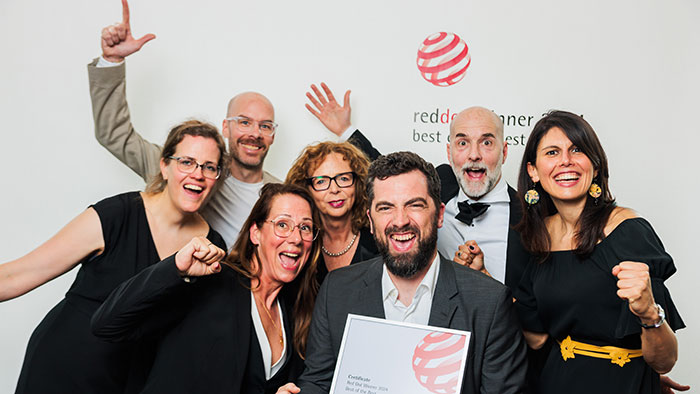A Philips sponsored symposium at this year’s Transcatheter Cardiovascular Therapeutics Conference (TCT 2021 - November 4 - 6, Orlando, U.S.) highlighted an increasing issue in cardiovascular care - that many elderly patients with both coronary artery disease and chronic kidney disease (CKD) do not currently receive cardiac reperfusion therapy due to the risk of acute kidney injury (AKI). Yet treatment for their heart condition could be just what they need to help their kidneys function better. During the symposium, leading interventionists discussed how Philips solutions and new procedure protocols are helping them rise to the challenge. Minimally-invasive surgery to clear clogged heart arteries - so called percutaneous coronary intervention (PCI) - has already been a life-saver for millions of patients around the world. Almost one million PCI procedures are performed each year in the U.S. alone. However, PCI procedures do not come without risk. The iodine-based contrast agent that is injected into the target artery so that a radiologist or interventionist can obtain a diagnostic X-ray image of the artery is ultimately excreted via the patient’s kidneys. If their kidney function is already compromised, there is a risk that it will result in a type of acute kidney injury known as contrast-induced nephropathy (CIN). If it does, patients typically need to stay in hospital for several days, sometimes requiring kidney dialysis while their kidneys recover. In a recent study, acute kidney injury was associated with an increase in length of hospital stay of 3.6 days with an associated increase in hospitalization cost of $9,448[1]. Another study revealed that 13% of patients leave the cath lab with acute kidney injury following PCI, leading to worse outcomes and additional cost.[2] The risk of acute kidney injury is one of the reasons why many interventionists are reluctant to perform PCI procedures on patients with impaired kidney function. Unfortunately, coronary artery disease and chronic kidney disease often go hand-in-hand, especially in the aging population, with as many as one-in-three coronary artery disease patients also presenting with chronic kidney disease[1]. The problem is that poor kidney function aggravates heart function, and poor heart function aggravates kidney function. Yet that same aggravated kidney function currently prevents many of them from receiving the PCI procedure they desperately need. While a number of recommendations have been made to reduce the risk of contrast-induced AKI, such as making sure patients are correctly hydrated during the procedure, one of the most effective solutions is to reduce the amount of contrast agent needed, ultimately even eliminating its use. As part of an ongoing program of innovation in interventional imaging systems and diagnostic and therapeutic devices, Philips has developed a unique combination of solutions to address the challenge.
Maximum information from the minimum dose
Diagnosing coronary artery disease and planning a PCI procedure to treat it normally starts with a coronary angiogram that requires the use of contrast agent, so the need to maintain high image quality at low contrast agent dose and the ability to capture the maximum amount of diagnostic information before it dissipates is critical. Philips has pioneered low contrast dose imaging on both its Image-Guided Therapy Platforms – Azurion and Allura – with its biplane imaging technology delivering twice the diagnostic information from a single contrast dose and its unique CardiacSwing dual-axis rotational coronary angiography allowing single-dose visualization of the patient’s coronary artery tree. The elimination of additional contrast agent use during a PCI procedure can be achieved by providing interventionists with alternative intra-operative imaging modalities that can be co-registered using systems such as the Philips Precision Guidance System – SyncVision – with previously acquired angiograms to enhance diagnostic confidence and guide treatment. For example, Philips’ Digital Intravascular Ultrasound (IVUS) Catheters allow accurate real-time assessment of a coronary artery’s anatomy, while the instant wave-free ratio (iFR) measurement capabilities of its catheter pressure wires provide physiological (functional) assessment of blood flow. These two adjunct modalities, combined with real-time X-ray images and co-registered angiograms on Philips Interventional Applications Platform – IntraSight – and Dynamic Coronary Roadmap (DCR) solution, provide all the information required to navigate to target lesions and deploy therapy devices such as balloons and stents to unblock coronary arteries. In the Philips sponsored symposium at TCT 2021, session moderator Ziad Ali, MD (St Francis Hospital, Roslyn, NY, USA), posed several questions about ultra-low contrast PCI to Allen Jeremias, MD (St Francis Hospital, Roslyn, NY, USA) and Karim Al-Azizi, MD (The Heart Hospital, Plano Baylor Scott & White Health, Plano, TX, USA), including: Who gets zero and who gets ultra-low contrast? How much contrast is too much contrast? So you have a patient CKD [stage] 5. What do you do? What happens to those of us who don’t have a [Philips] Azurion system with SyncVision and IntraSight? To view the entire symposium, which features two detailed walk-throughs of real-life ultra-low contrast PCIs performed on patients at risk of AKI, visit TCT 2021 (free registration required - available for one year from November 2021). [1] Amin P, et al. Incremental cost of Acute Kidney Injury after Percutaneous Coronary Intervention in the United States. AM J Cardiol. 2020 Jan 1;125(1):29-331.
“Zero, I think, should be reserved for patients at very, very high risk. There is obviously more risk with zero than if you give a little bit of contrast. In most cases, especially the more straightforward stuff, you can probably get a PCI done with 10 cc or less. What I like to do is basically you take one picture before, co-register it with the DCR. You have a nice map. You can guide the whole case [with] physiology imaging. You don’t need any more pictures. And you do one shot at the end at less than 10 cc and most patients tolerate that well, and that’s I think the safest thing to do.” - Allen Jeremias, MD
“I think any contrast is too much contrast for anybody and that’s why that’s the mindset that you want to keep. . . you use the minimal . . . the safest. I mean that you are balancing safety from a cardiac intervention standpoint and contrast nephropathy or AKI in general . . . we know that AKI can happen with this much of contrast or that much of contrast, especially when it comes to CKD stage 5.” - Karim Al-Azizi, MD
“It comes down to that concept of use what you have. It’s a concept of minimizing contrast, staging, use your IVUS catheter with fluoroscopic markers on it to perhaps help you mark where your lesions [are], how long are the lesions, and integrate that with your iFR pullback etc. so that you can plan your PCI accordingly. Then . . . if you have a co-registration system, you can add that and then eventually if you have all the tools . . . you can use them all.” - Karim Al-Azizi, MD
[2] Brown. J. Chronic Kidney Disease Progression and Cardiovascular Outcomes Following Cardiac Catheterization—A Population‐Controlled Study. J Am Heart Assoc v.5(10); 2016 Oct. PMC5121483
Share on social media
Topics
Contact

Joost Maltha
Philips Global Press Office Tel: +31 6 10 55 8116
You are about to visit a Philips global content page
Continue












